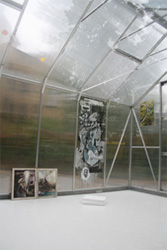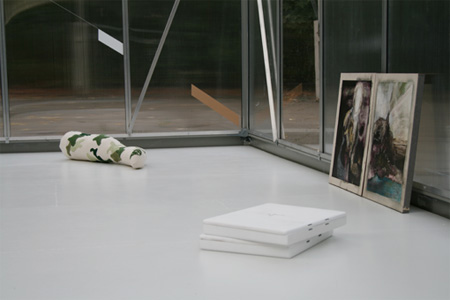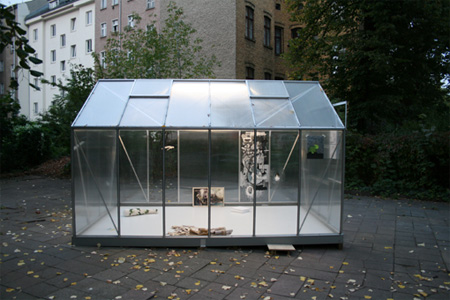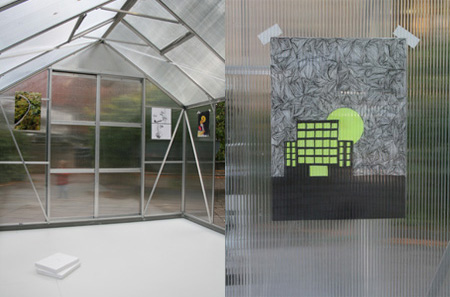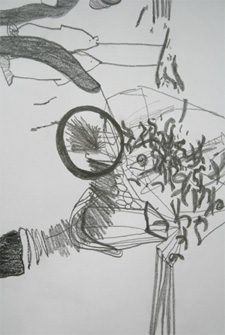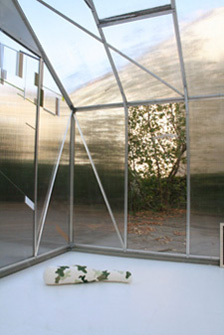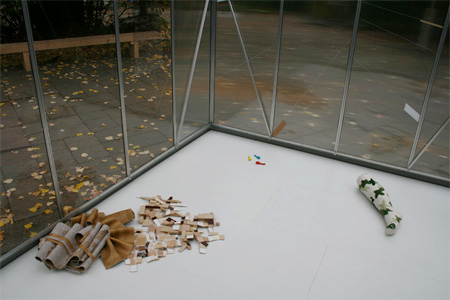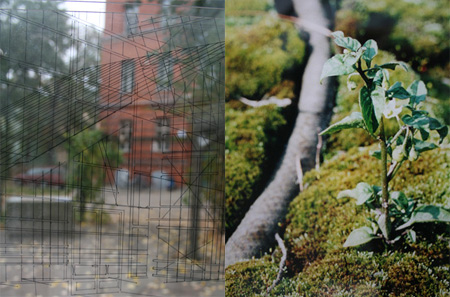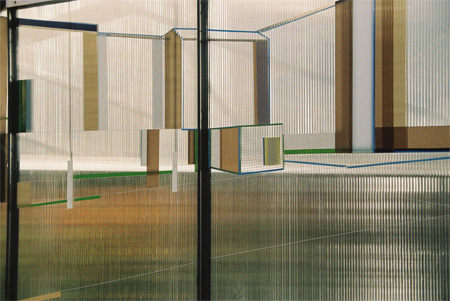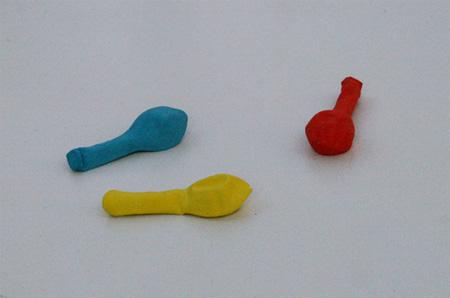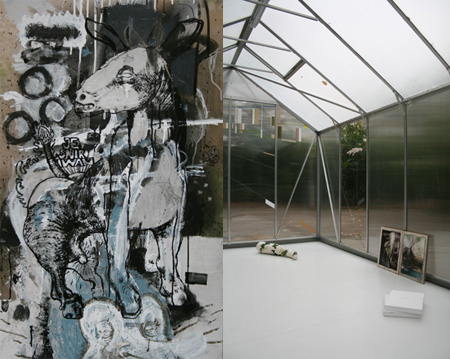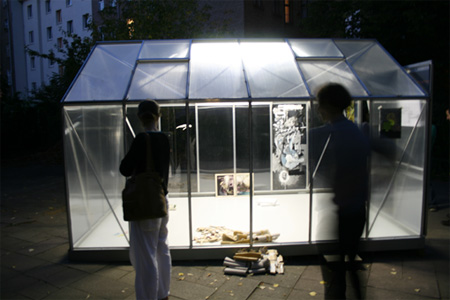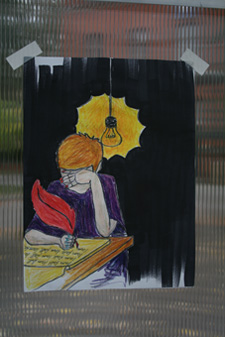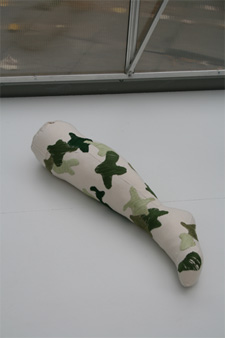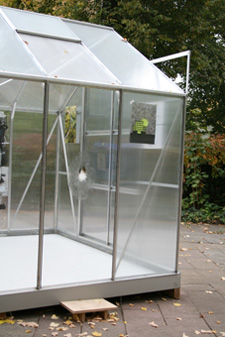
gewächshaus für zeitgenössische kunst
![]()
group wedding | 30.9. - 15.10.2006
Tolia
Astakhishvili
Gerry
Bibby
Saim Demircan
Marc Gröszer
Wojtek Hoeft
Sybille Hotz
David Keating
Janne Lervik
Catherine Marshall
Nicole Schuck
Carlos Silva
Anne Katrin Stork
group
wedding is the second exhibition that will
take place at super bien! The communal wedding, with its undertones
of exhibitionism, kitsch sentimentality and collective goodwill, is
the starting point for bringing together the work of 12 artists invited
by the super bien! team for its first group exhibition.
The
phenomenon of the Group wedding evolved amidst an environment of evangelism,
cult collectivity and media spectacle in the 1960’s. Clashing
together notions of anonymity and intimacy, the advent of the group
wedding challenged preconceived ideas about the individuals’ relationship
to the wider community and brought older cultural traditions right into
the burgeoning spheres of fame, entertainment, and the mass media. Some
saw this as an alarming breakdown of cultural values and others as a
liberating communal expression of love. As one of the initial exhibitions,
each member of Super bien! will invite a number of friends
or artists within their loose network to produce works for the show.
Drawing from this shared address book, Group wedding will bring together
artists unknown to each other under a faux premise of collective identity
and community.
The
exhibition is interested in how the work of artists connected through
only a few degrees of separation can potentially create new links and
meaningful juxtapositions. In Group wedding social proximity or belonging
to a similar group of producers has become the selection criteria, rather
than the ability of the selected works/artists to relate to specific
art-historical, thematic or theoretical positions. Just like in a group
wedding where the participants are sometimes intimate friends or total
strangers, Group wedding is a consideration of this platform of difference
and the effect of drawing on a conflictual utopian spirit.
The invited artists then have the option of producing works that specifically react to the context of the exhibition space, a semi-transparent greenhouse, or ignore its imposing presence. The final installation of the works will create a pastiche of ideas and forms, which develop their own relationships between each other and the context of the structure.
![]()
